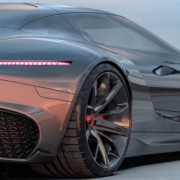Distributed electricity Generation with LNG
This blog post was written a long time ago and it was sort of sitting on my computer all this time. As I was asked how LNG works for a small flare to LNG to power project, I undug it, dusted it off and here we go. That’s one for the cool ones.
LNG is often touted to be a rich man’s fuel because it is often seen as being expensive. The reason for this is a supply chain that is more complex than the comparative supply chain for diesel or other distillate fuels.
To understand the reasons for this more complex chain one must understand the underlying nature of LNG.
LNG is nothing but Natural Gas in its liquid aggregate state. Natural Gas is a collection of gasses but primarily methane, the simplest hydrocarbon.
For the longest time, much Natural Gas could not even be used except if there was a permanent and durable connection from the source to the consuming point – a steel tube. To cram more Natural Gas into a limited space, pressure was applied to the Gas but this technology has its limitations. The higher the pressure, the heavier the tube or the vessel and the bigger the compressor must be.
Even as a compressed gas, the energy density of Natural Gas is still quite low on a volumetric basis as compared to standard distillate fuels such as diesel. So the combination of comparatively heavy tanks (it’s a pressure vessel) with a much lower punch for the weight and volume makes Natural Gas in lumps a very unattractive proposition.
To get more boom into the tank and make the tank lighter, one has to go the next step and liquefy the gas. Liquefied methane is about 600 times as energy-dense as uncompressed Natural Gas. That’s not as good as diesel yet, but it’s close. One liter of diesel matches 1,6 liters of LNG.
However, LNG is also lighter than diesel so on a punch-per-weight basis LNG is a good match with the most used fuel for heavy transport. Remains only the tank which is nothing but some form of thermos can.
The thermos is necessary to prevent heat influx. Just like anything, methane gas has 3 different fundamental aggregate states – solid, liquid, and gaseous. It’s just a matter of temperature.
At temperatures comfortable to us, methane is a gas. It takes cryogenic temperatures at minus 161 degrees Celsius to make it condense into a liquid and then it’s just boiling. Comparable to water boiling at 100 degrees Celsius.
This makes it look and feel a little alien to those who are used to an inert liquid in a metal can. But only to a point as those who get in touch with LNG and handle it daily quickly come to appreciate its properties. LNG has been produced on an industrial basis for more than 80 years now and it’s also that long that it has been handled safely. It’s much safer than gasoline as it does not explode and much cleaner than diesel as there are no toxic fumes.
Back to the electricity problem.
Thinking about the sparky energy immediately conjures pictures of huge dams, power plants, and relay stations as well as huge overland transmission cables. Only recently, windmills and solar farms have joined the picture but then again just as a sort of monstrous centralized production facility (where there is enough space and wind or sun) to be led through copper wires towards the point of consumption.
Just because it has been done this way in industrialized nations since the dawn of time (or at least since most of us can think) does not mean that this is something intelligent, to begin with. The centralized distribution business model of the power utilities has grown out of technological need and out of the way those utilities operated. Until just a little more than a decade ago, utilities were not exposed to competition. They only had to build and operate at marginal cost, slap a regulated profit margin on top, and sell their wares to customers who could not run away.
We must break free from this kind of thinking as better technology offers us smarter solutions. It’s not smart to produce huge amounts of power at centralized locations and then put it through copper wires losing much of the original energetic content in the process. It’s not smart to expose oneself to the uncertainty of a big, national grid.
Utilities will not change because they think this is the right thing. They will change because they will not have any choice anymore. Decentralized generation puts power back into the hands of the consumers which does not sound like an important thing to someone in North America or in Europe where power is stable.
In Africa, however, with its erratic electricity supply, it sure is a very sexy proposition. Being in control of your primary fuel supply that will give you the electrical stability you crave is going to be of paramount importance.
LNG is going to push a lot of buttons here as it’s not a generalized fuel used for many other applications. Essentially, if you don’t have specialized equipment able to run on LNG, the fuel becomes completely useless to anyone who is not specifically equipped.
Why is that important?
Well, in countries with constant fuel shortages, there is permanent competition for it. This means that the running for fuel never stops and this can be trying. Hard to understand for someone in Europe who never had to queue to get a fill but Africans will grasp the importance of not having to worry about availability anymore in a second.
The first LNG projects for local use will have to tie up their customer base in advance so there is going to be a finite amount of LNG available for a finite amount of users so shortages or overhangs will be rare if possible at all.
The truck delivering LNG to your genset does not have an awful lot of alternative customers to go to (at least during the first 10 years or so) and hence will always deliver to you, even if the queues for diesel reach the moon and back.
This is not an advantage that lasts forever but if clean, cheap, and reliable are not reasons enough for you to make the switch, you care about very different things than your quality of life.


















Leave a Reply
Want to join the discussion?Feel free to contribute!